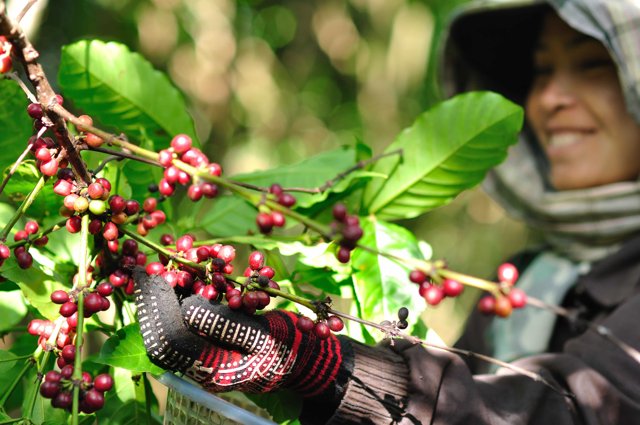Access to capital
To scale up services and reach greater impact, donor grants are not sufficient. More risk-bearing capital is needed for entrepreneurs in AgTech to pass the ‘Valley of Death’. These additional investments could for example be used to further increase user engagement, improve services, geo-ict infrastructure, marketing, offices, etc. Not only does this applies to G4AW projects, also for the majority of enterprises in the start- and/or scale-up phase.
Each (new) enterprise from the G4AW Facility eventually needs to evolve from being financed via subsidies or grants, into becoming bankable with traditional financial means, such as debt, equity, working capital loans, etc. Typically, financial sustainability is only achieved after many years. For investors and financiers, this however could be a pre-condition before providing either risk-bearing capital or more traditional loans.
On this page you find information on:
- Inventory of “Access-to-Capital”, a database with investors for AgTech
- Overview of different kinds of financiers
- Company finance

AgTech Funds
Our partner Dutch Platform for Inclusive Finance (NpM) maintains a database of AgTech funds providing risk-bearing capital, to consolidate this information for companies active in the agriculture sector. The geographical focus is on Africa and South-East Asia, but 40 or more are also active globally.
Users can navigate through the database by selecting fund size, geographical scope, investment size, and instruments. Additionally, it is possible to select whether the fund is a good fit for companies participating in the G4AW programme, whether the fund provides Business Development Services (BDS), and whether it considers itself an ‘impact investor’.
This inventory is not an exhaustive list of all funding options available to candidates, but offers examples of fund providers or programs that may be relevant. Generally, only few investment funds offer small ticket sizes (investment below 5 million euro). Funds that are informed about G4AW Facility and providing small ticket sizes include: IFAD ABC Fund, IDH FarmFit Fund and AgFunder.
Different financiers
Social/ Impact Investment Funds: closed or open ended funds from either retail, institutional, NGO or venture capital investors with the objective of creating a social or developmental impact in emerging countries, often with a special focus on agriculture and/or technology. They may offer different type of instruments (loans, equity, guarantees) and each fund has its own specific eligibility criteria and required returns.
(Development) Banks: Licensed (development) banks with a mission to support businesses in developing countries. In case they provide direct investments it is indicated in the table. Most Development Banks typically follow an “indirect” investment model, where they mostly provide funding to funds. These portfolio funds are active investors in a large range of initiatives, business type and company stage. In addition local banks or special government banks (e.g. the agricultural bank) may be an option, but these are not included in this inventory.
Other Financing Facilities: Non-bank institutions, foundations and other funds and facilities that offer financing options focused on agri-value chains or commodities in emerging economies.
Other Financing Facilities focused on smallholders: Banks, funds and other facilities offering solutions for smallholder financing, often by providing loans or guarantees to financial intermediaries such as cooperatives, microfinance institutions, or agri-input suppliers.
Company Finance
A company needs short term and long term financing.
Typically short term financing is needed to run the operations of the company. Having adequate financing to manage day-to-day operations of the company ("working capital needs") is crucial as shortfalls in cash can be detrimental for obvious reasons. Short term financing needs will mainly depend on the company’s operating cycle; when does the company receive payment for it services? When does the company have to pay its employees and its providers?, etc.
Once the company has a clear idea of how and when cash will come in and flow out of the company, any shortfalls will be more easily forecasted. Once possible shortfalls are identified, the company needs to see if this can be financed internally (for example with expected retained earnings, partnership contributions, own capital, etc.). If this is not possible it should consider external sources of funds, which will typically have a short term (less than 1 year), such as a credit line (short term loan) with a local bank, a trade finance facility or a supply chain finance product.
Long term financing requirements will largely depend on the growth and investment strategy of the company. For example, for business expansion when services need to be rolled-out to new regions or a new asset will be bought. This will require a large capital expenditure to finance the new asset. This could be provided by a longer-term loan with collateral (e.g. 'asset-backed 'loan), newly attracted equity or various other instruments.
For more information on the agricultural investment landscape and some funds please see a selection of reports below, or at “Recommended reading”.
Reports:
- AgFunder Agrifood Tech Investing Report 2019
- Britter Report Africa’s 2019 Funding Landscape
- IDH FarmFit: Insights Report Service Provision as a Viable Business
- IFAD ABC Fund
- Rabobank Agri3Fund
- World Bank, Future of Food: Maximizing Finance for Development in Agricultural Value Chains
Recommended Reading:
- AGRILINKS; series on International Investment Funds:
- GIZ Accelerator Program for Climate Change Innovations